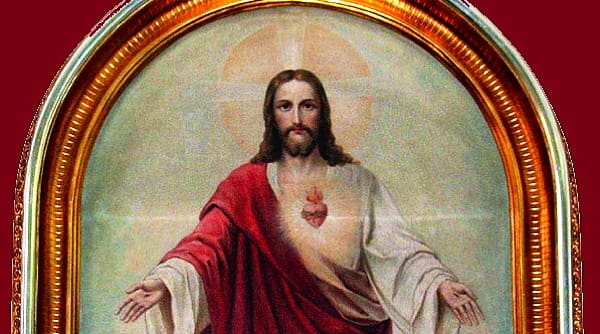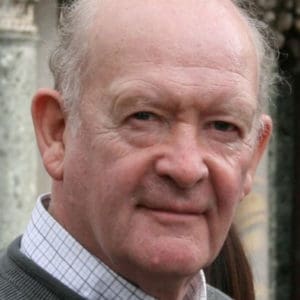Mini-Course on Prayer
Part 5: The Journey Begins
In my last article in this series on prayer, I used the image of an archway to show how vocal prayer and contemplative prayer should ideally grow side by side. In this way, they will find their consummation in the keystone at its summit, which I identified with Christ.
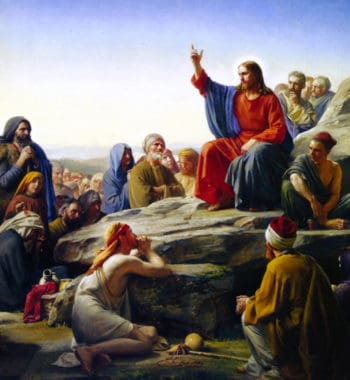 I would firstly like to concentrate on vocal prayer. In order to do this, I would like to share with you a memory jog or a mnemonic to remind you of the essential ingredients of the daily prayer that we should make each day. It can be carried with you in your head like a little mental prayer book to which you can refer at any time of the day. When his disciples first asked Our Lord how to pray, Jesus gave them the Our Father. Try to use every letter of the two words, Our Father, as a reminder of the essential ingredients of all authentic Christian prayer. This can become your little mental prayer book. Use the letters O-U-R as a reminder of the three essential features of Morning Prayer.
I would firstly like to concentrate on vocal prayer. In order to do this, I would like to share with you a memory jog or a mnemonic to remind you of the essential ingredients of the daily prayer that we should make each day. It can be carried with you in your head like a little mental prayer book to which you can refer at any time of the day. When his disciples first asked Our Lord how to pray, Jesus gave them the Our Father. Try to use every letter of the two words, Our Father, as a reminder of the essential ingredients of all authentic Christian prayer. This can become your little mental prayer book. Use the letters O-U-R as a reminder of the three essential features of Morning Prayer.
- The letter –O– would be a reminder to say the morning offering by using a set prayer or in your own words.
- The letter –U– would be a reminder that, as we make this prayer, we are uniting ourselves with Christ and with all who are in him.
- Then the letter –R– would be a reminder to review the coming day, resolving to do all and everything for the honour and glory of God.
A Blueprint for Prayer
Every letter of the word Father could be used too, as a reminder of how to pray during the day or in the evening or at any time set aside for that purpose.
- The letter –F– will be a reminder to make an act of faith. This enables us to express our belief as simply as possible in our own words, in the God who is an ever-loving Father, in Jesus, and in the Holy Spirit who draws all of us back through Jesus into God’s kingdom of endless loving. Once we have briefly meditated on what God has done for us, and is continuing to do for us, it is time to make our response. Use the remaining letters of the words Our Father, accordingly.
- The letter –A– stands for the word abandonment,
- T– for thanksgiving,
- H– for Holy Communion,
- E– for examination of conscience,
- and finally R– for repentance.
From Here to Eternity
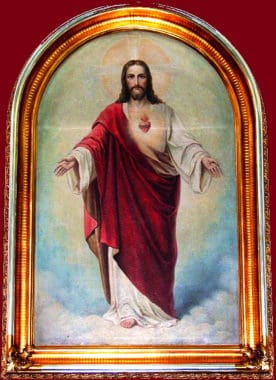 It is a good idea to begin daily prayer by trying to visualise our Risen Lord, as he is now, in the act of loving, in the act of sending out the inner mystical loving that revolves endlessly between the Father and the Son onto and into all who would receive it – now! The icon of the transfigured Christ may help or a picture of the Sacred Heart or some other picture that helps remind us that God is loving us now and always in the sacrament of this present moment. No matter what we do, God is always loving us. Only our perseverance, not for a few months or even a few years, but for a lifetime, will enable his love to do in us what will change all our lives beyond all our hopes, beyond all our wildest dreams and lead us relentlessly onward from here to eternity, to experience the ecstatic bliss of love without measure and to all eternity.
It is a good idea to begin daily prayer by trying to visualise our Risen Lord, as he is now, in the act of loving, in the act of sending out the inner mystical loving that revolves endlessly between the Father and the Son onto and into all who would receive it – now! The icon of the transfigured Christ may help or a picture of the Sacred Heart or some other picture that helps remind us that God is loving us now and always in the sacrament of this present moment. No matter what we do, God is always loving us. Only our perseverance, not for a few months or even a few years, but for a lifetime, will enable his love to do in us what will change all our lives beyond all our hopes, beyond all our wildest dreams and lead us relentlessly onward from here to eternity, to experience the ecstatic bliss of love without measure and to all eternity.
OUR O – The Morning Offering
On the day when Pope Benedict first used the Internet to tweet, he was asked by one of his respondents how married people living such busy lives could find time for prayer? He replied, “By offering everything that is said and done each day to God.” First thoughts on waking each morning, he said, should be to offer the forthcoming day to him. It was my mother who first taught me to say the morning offering. She told me that by offering all that I said and did to God in the day ahead of me I would be able to transform ordinary little things into precious gifts for God, just as Rumpelstiltskin had turned straw into gold. This is the real Philosopher’s Stone that can transform something far more important than base metal.
My mother taught me to say my morning offering the moment I woke up in the morning. But above all she showed me how to put it into practice by her own example. It was not the little things that I noticed at first, but the big sacrifices that she made, that even I noticed. Like that terrible moment in her life when her own precious son, my brother, was killed at the age of only twenty-two. It was with the help of her spiritual director Abbott Williams that she gradually learnt to accept his death, as Mary did as she stood at the foot of the Cross. Lessons learnt in such moments are never forgotten. They indelibly stain the memory and determine the way you think and act for the rest of your life, for better or for worse.
Two Mothers are Better than One!
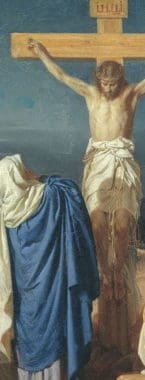 In my mother’s case it was for better not worse, as it was for Mary. For both of them it meant that through their terrible ordeal, their motherhood had somehow been refined and deepened to the benefit of other children who looked to them for the motherly love that was always given without measure. I for one know this because I experienced it for myself, and still do. My morning offering always reminds me of my mother for it was she who first taught me how to make it. It reminds me of the other Mother too, who inspired her and who was given to us all by Jesus as he died on the Cross. So this is the time in my Morning Prayer when I say a Hail Mary to ask her to help me today, as I try to offer all I say and do to God the Father through her son, Jesus. I always try to remember my mother’s terrible loss and to pray for her as well as for my brother.
In my mother’s case it was for better not worse, as it was for Mary. For both of them it meant that through their terrible ordeal, their motherhood had somehow been refined and deepened to the benefit of other children who looked to them for the motherly love that was always given without measure. I for one know this because I experienced it for myself, and still do. My morning offering always reminds me of my mother for it was she who first taught me how to make it. It reminds me of the other Mother too, who inspired her and who was given to us all by Jesus as he died on the Cross. So this is the time in my Morning Prayer when I say a Hail Mary to ask her to help me today, as I try to offer all I say and do to God the Father through her son, Jesus. I always try to remember my mother’s terrible loss and to pray for her as well as for my brother.
It is in Giving that We Receive
When our family went to Mass each Sunday, they saw their mother totally absorbed in what they took all too easily for granted. Their selfishness meant that they had comparatively little to offer yet, while she was offering a thousand and one acts of self-sacrifice made for them during the previous week. This meant that she received to the measure of her giving. Without any formal theological education, she discovered for herself that the Mass is not only a sacrifice, the place where we offer ourselves, in, with and through Christ to the Father, but something more. It is also a sacred sacrificial meal where we receive the love that he is endlessly pouring out, onto and into all who are open to receive it, through daily sacrificial giving. It was here that she received the help and strength she needed to go on selflessly giving in the forthcoming week for the family that she loved so much. Each day she reminded herself of this, her sacred calling, by making her morning offering, as her recusant ancestors had done for hundreds of years before her -‘in spite of dungeon, fire and sword’. If ever I forgot to say mine, she used to say that the Curé d’Ars would insist that, “All that we do without offering it to God, is wasted,” and he was right.
These ideas are developed further in my two major works on prayer – Wisdom from the Western Isles and Wisdom from the Christian Mystics, and Wisdom from Franciscan Italy that shows how deep contemplative prayer grows to perfection in the Life of St Francis of Assisi.
Editor’s Note: In Part 6, David Torkington will continue explaining the mnemonic, or memory jog, for keeping God and prayer at the forefront of our lives, using the letters “U” and “R” of “Our Father”.
+
Art for this post on the beginning of our prayer journey: The Sermon on the Mount, Carl Heinrich Bloch, 1877, Restored Traditions, used with permission. The picture depicts the Sacred Heart of Jesus on an early 20th-century painting (the painter is unknown). It is exhibited in the Greek Catholic Cathedral of Hajdudorog, Hungary. This painting decorates the Western wall of the Northern side-nave, undated, photographed by jojojoe, 26 April 2010, CCA-SA 3.0 Unported; Detail from Crucifixion, Evgraf Semenovich Sorokin, 1873, PD-US author’s life plus 70 years or less; both Wikimedia Commons.



